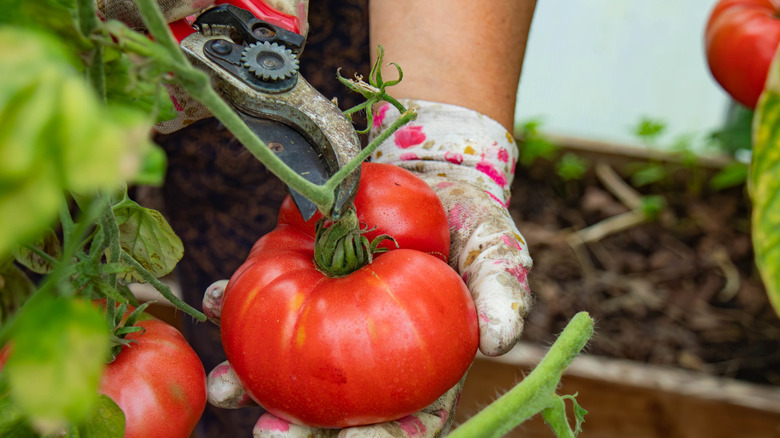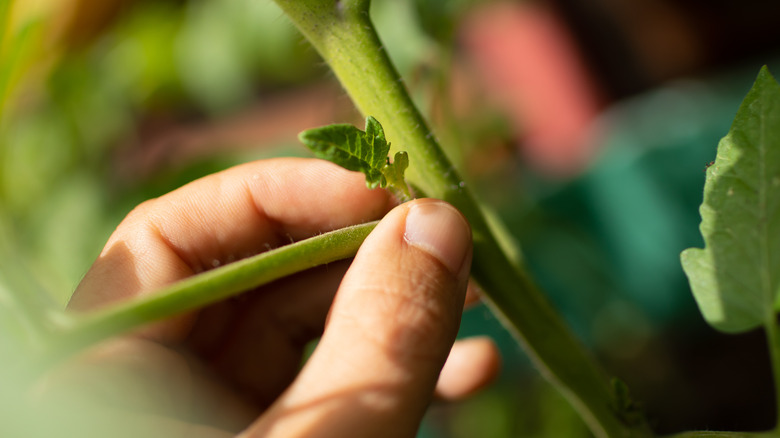How To Prune Tomato Plants To Ensure A Delicious Harvest
Pruning tomato plants can be the key to a lush, flavorful harvest, but knowing how and when to prune is essential for success. By strategically removing certain stems and leaves, you can boost your plant's growth, increase fruit production, and even improve the quality of your tomatoes. Whether you're a first-time gardener or a seasoned pro, learning how to properly prune will help you grow better tomatoes.
There are plenty of reasons to prune your tomato plants. Without a good trim, tomatoes can get heavy and unruly. This usually means your fruits end up way too close to the ground, making them easy targets for pests, animals, or fungi. Pruning also helps the plant focus its energy on producing juicy tomatoes instead of wasting resources on those pesky "suckers" — and it boosts photosynthesis for healthier growth.
There are two essential steps to pruning. First, remove low stems to help the plant grow up and away from the ground. Start by locating the lowest flower or fruit cluster on your tomato plant. Below this branch is where you'll want to concentrate your pruning efforts. Remove any suckers that grow between the base of the plant and its first flower cluster. This keeps the main stem strong and ensures that energy goes toward the fruits. Secondly, cut off extra stems and leaves at the top to give your plant some breathing room. Thin out extra foliage above that first flower cluster to improve airflow and sunlight exposure so that your plant has everything it needs to thrive.
Know your tomatoes before you prune
Before you start snipping away, it's essential to figure out which type of tomato plant you're working with. There are two main kinds: determinate and indeterminate. Determinate tomatoes are more short and bushy, while indeterminate types grow tall and vine-like. Determinate plants bloom all at once, usually producing fruit over about a month. Indeterminate tomatoes, on the other hand, will keep growing and blooming all season until frost takes them down.
This matters because determinate tomatoes don't require much pruning. For these types, you only need to remove the suckers below the lowest flower. Pruning anything above that would actually mean removing potential new fruits. You can grow determinate tomato varieties from seeds like Roma, 'Rutgers,' 'Bush Beefsteak,' or the 'Zebra Cherry.'
With indeterminate tomatoes, though, pruning becomes essential to keep them manageable and productive. If you let too many stems grow, you'll get more tomatoes, but they'll be smaller. Fewer stems mean fewer tomatoes, but oftentimes bigger and juicier. Common types of indeterminate tomatoes include 'Sungold,' 'Big Beef,' 'Cherokee Purple,' and most cherry tomatoes.

